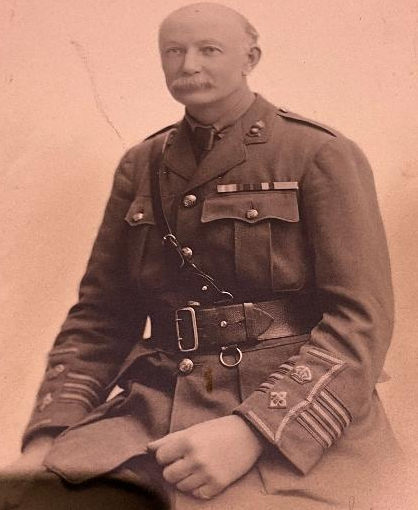
Figure 1. Lieutenant Colonel Francis Arthur Molony, O.B.E., R.E.
(Image courtesy of Penny Davis)
Lieutenant Colonel
FRANCIS ARTHUR MOLONY,
O.B.E.
Royal
Engineers
by
Lieutenant Colonel Edward De Santis, MSCE, PE,
MInstRE
(Amended
November 2023)

Figure 1. Lieutenant Colonel Francis Arthur Molony,
O.B.E., R.E.
(Image courtesy of Penny Davis)
1. INTRODUCTION
Francis Arthur Molony served in the Army from 1882 to 1913. During that period he earned four campaign medals, which will be discussed in detail in Section 7 of this narrative. Although he earned four medals, the author only has in his possession one of them, the King’s South Africa Medal, which Molony earned during 1901 and 1902. The whereabouts of his other medals are unknown and how this one medal in the author’s possession got separated from the other medals also is unknown.
The principal references used in the preparation of this narrative were from a number of sources. They include a number of books, census records, official documents in the United Kingdom, a number of family trees, Army Lists, internet web sites, The London Gazette and various periodicals. All sources are contained in the REFERENCE section at the end of the narrative and are cited throughout in the ENDNOTES. Every effort has been made to accurately portray the life and military service of Lieutenant Colonel Molony and also of a number of members of his family.
The National Army Museum (NAM) in London is known to contain papers of Molony’s from 1881 to 1902 (Archives 1976-08-33) which are associated with the Boer War of 1899 to 1902. The National Archives (TNA) does not contain his service papers and it is believed that they probably can be found at the Army Personnel Centre (APC) in Glasgow. Neither of these sources has been searched, since the COVID-19 virus of 2020-2021 has basically caused both agencies to be locked down for fear of spreading the disease. If and when the NAM and the APC open for business again, more information will probably be added to Molony’s story.
a. Family Information
Francis Arthur Molony was the son of Frederick Beresford Molony (1833-1868), Civil Servant for Madras of the Honourable East India Company (H.E.I.C.) and his wife Eleanor Jane Molony (1834-1928), née Gayer, the eldest daughter of A.E. Gayer, Esquire, Q.C. of Upper Mount Street, Dublin. Frederick and Eleanor Molony had four other children in addition to Francis; Mary Selina (1860-1943), Herbert James (1865-1939), Eleanor Florence (1867-1953) and Agnes Freda Helen (1868-1924).[1]
b. Early Life
Francis Arthur Molony was born on the 9th of May 1863 in Madras, India. He was baptized in Cuddapah, Madras on the 26th of August 1863,[2] so it may be assumed that his father was employed by the H.E.I.C.as a Civil Servant in the Cuddapah District of the Madras Presidency. A detailed description of the Cuddapah District can be found in “A Manual of the District of Cuddapah in the Presidency of Madras” compiled and edited by J.D.B. Gribble, M.C.S., the Government Press, Madras, 1875.
As a child Francis and his family lived at 3 St. James’s Road in Tonbridge, Kent. The composition of the Molony household in 1871 is shown in the table below. Frederick Molony had died in 1868, so his wife Eleanor is listed as the head of the household.
1871 Census of England
Census Place: 3 St. James’s Road, Tonbridge, Kent. |
|||||
Name and Surname of each Person |
Relation |
Marital Status |
Age |
Profession or Occupation |
Birthplace |
Eleanor Molony |
Head |
Widow |
36 |
Annuitant |
Dublin, |
Mary [Selina] Molony |
Daughter |
|
10 |
Scholar |
Madras, |
Francis [Arthur] Molony |
Son |
|
7 |
Scholar |
Madras, |
Herbert [James] Molony |
Son |
|
5 |
Scholar |
Dublin, |
[Eleanor] Florence Molony |
Daughter |
|
4 |
|
Ramsgate, |
[Agnes] Freda [Helen] Molony |
Daughter |
|
2 |
|
Clinton, |
Amelia Steers |
Domestic Servant |
Married |
31 |
Governess |
Epsom, |
Harriet Smith |
Domestic Servant |
Single |
30 |
Nurse |
Yalding, |
Eliza Belcher |
Domestic Servant |
Single |
20 |
Housemaid |
St. Luke’s, |
Eliza Twiner |
Domestic Servant |
Single |
20 |
Cook |
Hunton, |
NOTE: The names in brackets do not appear on the census form. Apparently Eleanor Molony gave the census take the name by which each child was known rather than their full names. For consistency and clarity, their full names have been included by the author.
Information regarding Francis’ early education is not known; however the 1881 census records show that he was a Gentleman Cadet at the Royal Military Academy at Woolwich. Information in the census shows Molony as a Boarder, Unmarried, 17 years of age and place of birth, East Indies.
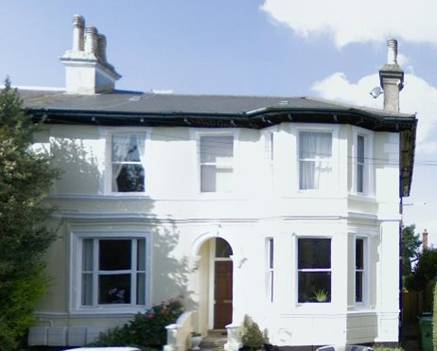
Figure 2. 3 St. James Road, Tonbridge, Kent.[3]
(Image
courtesy of Google Earth)
3. COMMISSIONING AND TRAINING
a. Commissioning
Francis Arthur Molony was commissioned on the 25th of July 1882 as a Lieutenant in the Royal Engineers.[4] He was commissioned on the same date as James Molesworth Wade, whose medals also are in the author’s collection.
b. Training
After commissioning Molony was immediately posted to the School of Military Engineering (SME) at Chatham, Kent for officer training and he remained at Chatham for about two and a half years. His training would have included such subjects as field fortifications, siege works and mining, demolitions, bridging, electricity and telegraphy, chemistry, surveying, submarine mining, railway work and other subjects involving field engineering.
4. POSTINGS AND CAMPAIGN SERVICE
The Sudan (1885-1887)
Upon completion of his studies at the School of Military Engineering Lieutenant Molony was posted to the 10th (Railway) Company, Royal Engineers. On the 14th of March 1885 the company sailed for the Sudan to take part in the Suakin Expedition. The Suakin Expedition refers to two military expeditions led by Major-General Sir Gerald Graham V.C., with the intention of destroying the power of Osman Digna who was a follower of Muhammad Ahmad, the self-proclaimed Mahdi, in the Sudan. The first expedition took place in February 1884 and the second in March 1885. It was in this second expedition that Lieutenant Molony would first see active service.
Figure 3. Osman Digna. |
Figure 4. Sir Gerald Graham, V.C. (Photograph courtesy of Wikipedia) |
The 10th (Railway) Company landed in the Sudan at Suakin on the 7th of April 1885. At the time, the Commander Royal Engineers in the Sudan was Colonel James Bevan Edwards, C.B.[5] The 10th Railway Company, Royal Engineers was commanded by Major W.H. Rathbone, R.E. Other officers in the company included Captain H.G. Kunhardt, R.E., Captain W.A.E. St. Clair, R.E., Captain G.H. Sim, R.E. and Lieutenant H. Bonham-Carter, R.E. In addition to regular soldiers of the Royal Engineers, the 10th (Railway) Company listed 39 Volunteers on its rolls, 25 of them from the 1st Newcastle and Durham Engineers, 7 from the 1st Lancashire Engineers, and the remaining 7 from various other corps, enlisted for the duration of the war. The normal peace time establishment for the Royal Engineers railway companies was 2 officers, 6 staff sergeants and sergeants, 2 buglers, 14 corporals and second corporals and 43 sappers. This strength represented only the cadre for the company in wartime. At the time the unit it was in the process of active service expansion. In the Sudan the company would also employ a civilian work force to assist in its work.
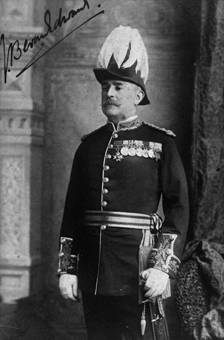
Figure 5. Colonel James Bevan Edwards, C.B.,
Commander Royal Engineers in the Sudan
(Photograph courtesy of
Wikipedia)
Shortly after landing at Suakin, a party under Captains Kunhardt and St. Clair and Lieutenant Molony was detailed to survey and stake out a proposed railway line, while the remainder of the company worked on the 18-inch gauge railway system around the town. Lieutenant Molony and his company subsequently worked on extending the railway line from Quarantine Island in Suakin harbour to Handub and Otao where the line reached on the 30th of April. During this time 16 miles of track were completed. Construction on the railway ceased in early May of 1885 when hostilities ended in the area.
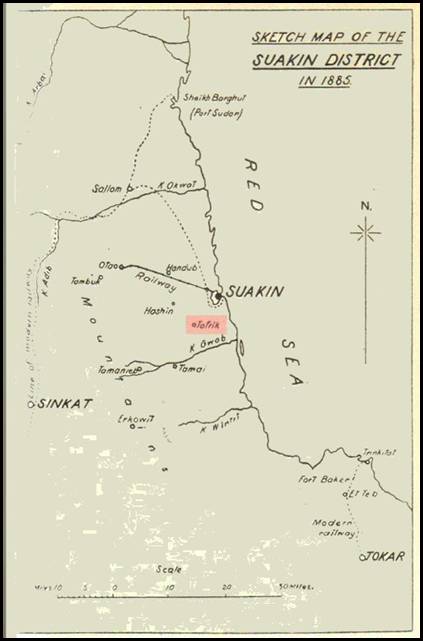
Figure 6. Map of the Suakin District Showing the
Railway Line.
(Map courtesy of Sandes, E.W.C.)
For his service in the campaigns in the eastern Sudan, Molony was awarded the Egypt 1882 Medal with clasp [SUAKIN 1885] as well as the Khedive’s Bronze Star, 1884-1886.
Home Service (1887-1890)
Lieutenant Molony remained with the 10th (Railway) Company when it returned to England and was stationed at Plymouth.[6]
NOTE: Molony’s service papers, if found, may provide more information regarding his activities during this period.
Canada (1890-1893)
Lieutenant Molony was serving with the 18th Field Company, Royal Engineers in Halifax Nova Scotia in 1890.[7] On the 20th of October 1890 he was promoted to the rank of Captain. His wife was with him in Canada at this time and two of his children were born there. Molony departed Canada for home in 1893.[8]
NOTE: Molony’s service papers, if found, may provide more information regarding his activities during this period.
Woolwich (1893-1899)
During this period Captain Molony served at Woolwich and he attended the Staff College.[9] He passed the staff college final examination (p.s.c.) in 1898.[10] Since he was at Woolwich for about six years, it is possible that he served as an instructor at the Staff College.
NOTE: Molony’s service papers, if found, may provide more information regarding his activities during this period.
South Africa (1899-1903)
On the 21st of October 1899 Captain Molony was posted to the forces in South Africa. He served on the Line of Communications as a staff officer to Colonel J.W. Murray.[11] On the 3rd of November he was promoted to the rank of Major.[12] His posting to the Line of Communications took him to many areas in South Africa during the war. The following table outlines his movements during the war.[13]
Dates |
Locations |
November 1899 to March 1900 |
Took part in operations in the Orange River Colony. |
14-28 February 1900 |
Present at the Battle of Pieter’s Hill. The
final battle fought by Buller’s Natal Field Force between
14th and
28th February 1900, leading to the relief of Ladysmith and the
Boer retreat from Natal.[14] |
March to May 1900 |
Took part in operations in the Orange Free State. |
May 1900 |
Served as Staff Officer, Royal Engineers, at Mafeking after the relief of the town. |
June to September 1900 |
Took part in operations in the Orange River Colony. |
September to October 1900 |
Took part in operations in the Transvaal, west of Pretoria. |
November to December 1900 |
Took part in operations in the Orange River Colony. |
December 1900 to May 1902 |
Took part in operations in the Cape Colony. |
1902-1903 |
Served as the Commander Royal Engineers of the South Africa Field
Force in the Cape Colony. |
NOTE: If Molony’s service papers can be obtained they might provide more detail regarding the specifics of his work in South Africa during the war.
Major Molony probably departed South Africa shortly after the war ended. For his service in the Second Boer War he was awarded the Queen’s and King’s South Africa Medals.[17] The Queen’s South Africa Medal was awarded to him on the 13th of April 1904.[18]
Berehaven, Ireland (1903-1908)[19]
Captain Molony was posted to the Irish Command at Berehaven, County Cork, Ireland sometime in 1903 or 1904. He was assigned as the District Engineer for that part of Ireland and was responsible for Engineer Services that were provided to the various military facilities and units in County Cork. The Commander Royal Engineers for the district was Brevet Colonel Alfred Creagh MacDonnell (1855-1897) and Molony and MacDonnell worked out of the R.E. Headquarters located at The Barracks in Cork. In addition to the men of the Establishment for Engineer Services (see Annex A) of which Molony was a part, MacDonnell also had under his command the 6th Company and the 33rd (Fortress) Company which were stationed at Berehaven. Molony had an Assistant District Engineer, Lieutenant G.G. Brown, who also was the Officer Commanding No. 11 Section of the Coast Battalion, R.E. While serving in Ireland, Molony became a member of The National club, a Yacht Club in Dún Laoghaire, County Dublin.
In 1905 Molony wrote a paper for publication in the Professional Papers of the Corps of Royal Engineers, Volume 30. The paper, entitled Pieter’s Hill: A Tactical Study, was 18 pages long and included a map of the battle. His work was a detailed account of the battle, which took place from the 14th to the 27th of February 1900, in northern Natal, South Africa. Although he does not state so in the paper, the detail that he provides in describing the battle makes one think that he may have been present during the action and that his descriptions are really first-hand accounts. His reason for writing the article may be summed up by one of his closing remarks where he states “Our success at Pieter’s was due to many causes, chief among which was the excellent co-operation of infantry, artillery and engineers.” As an engineer officer he naturally was focused on the role played by the R.E. units during the battle. These units consisted of the following:
17th Field Company with the 2nd Infantry Division
37th Field Company with the 5th Infantry Division (Commanded by Sir Charles Warren, a Royal Engineers Officer)[20]
A section of the Telegraph Division
“A” Pontoon Troop
A Balloon Section
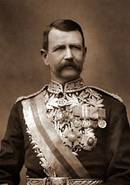
Figure 7. General Sir Charles Warren, GCMG, KCB,
FRS.
(Photograph courtesy of Wikipedia)
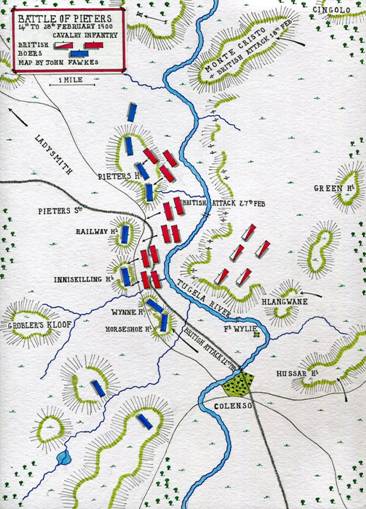
Figure 8. The Battle of Pieter’s Hill.
(Map
courtesy of BritishBattles.com)
A great deal of bridging was required during the battle, as the Tugela River was in half flood during the British assault on the Boer position. In addition to bridging, the R.E. field companies constructed a road to enable the Royal Artillery to move guns up to the Hlangwane plateau.
The first pontoon bridge was constructed west of Hlangwane on the 21st of February and it was used by General Warren’s 5th Division to cross the Tugela. In addition to constructing the bridge, the engineers had to erect a sandbag parapet along the bridge to protect the troops crossing the river. A second bridge, known as the Pompom Bridge, also was constructed over Onverwach spruit and was protected by a sandbag parapet. This bridging work required the movement of men and equipment on the battlefield, many times under Boer artillery and long-range rifle fire. The engineers had to work in exposed positions and were clearly observed by the Boers from their positions on the high ground.
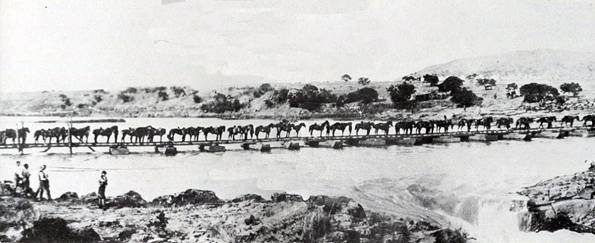
Figure 9. British Cavalry Crossing the Tugela River on
the 27th of February 1900
during the
Battle of Pieter’s Hill.
(Photograph courtesy of
BritishBattles.com)
The bridging operations undertaken during the battle by the 17th and 37th Field Companies, using the equipment of “A” Pontoon Troop, was essential for moving infantry artillery and later cavalry across the Tugela River to assault the Boer positions on the heights to the west of the river.
Stobs, Scotland (1908-1910)[21]
In 1908 Molony was transferred to the Scottish Command as a District Engineer, again responsible for Engineer Services. He worked out of Stobs Military Training Camp located just outside of Hawick in the Scottish Borders region.
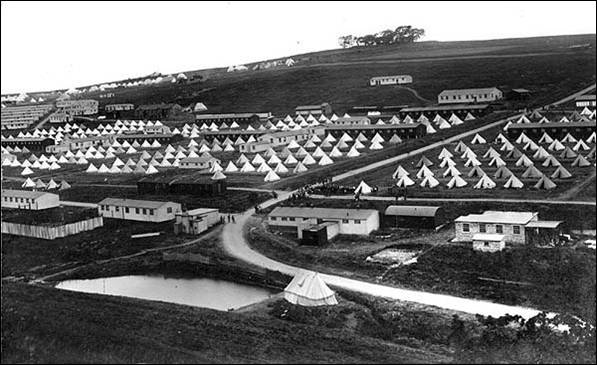
Figure 10. Military Training Camp, Stobs, Scotland, c.
1910.
(Photograph courtesy of Wikipedia)
Perth, Scotland (1910-1913)[22]
During his final years in the Army Major Molony continued to serve in the Scottish Command at Perth where he was the Acting Commander Royal Engineers and District Officer responsible for Engineer Services in the area. He retired from the Army on the 17th of May 1913 and became part of the Reserve of Officers in 1914 as a Lieutenant Colonel.[23]
The following sections are presented in tabular form to summarize Molony’s promotions, appointments, military training and qualifications and the medals that he was awarded during his time in the Army. They are provided to give the reader easy access to these aspects of his military career. The tables are followed by sections dealing with his marriage, personal information and post-service life.
5. PROMOTIONS AND APPOINTMENTS
a. Promotions: Molony received the following promotions during his time in service:
Date of Promotion or Appointment |
Rank or Position |
25 July 1882 |
Commissioned a Lieutenant in the Royal Engineers from the Royal Military Academy. |
22 October 1890 |
Promoted Captain. |
27 October 1899 |
Promoted Major. |
8 June 1916 |
Promoted Lieutenant Colonel in the Reserve of Officers. |
b. Appointments: Molony received the following appointments during his time in service:
Date of Appointment |
Position |
March 1885 |
Company Officer, Railway Company, Royal Engineers. |
1890 |
Company Officer, Field Company, Royal Engineers. |
October 1899 |
Staff Officer, Line of Communications. |
1901 |
Staff Officer to the Inspector General, Line of Communications. |
1902 |
Field Force Commander Royal Engineers. |
1903 |
District Officer, Establishment for Engineer Services. |
6. MILITARY TRAINING AND QUALIFICATIONS
a. Military Training: Molony’s military training consisted of the Young Officer’s Course at the School of Military Engineering and the Staff College Course at Woolwich.
NOTE: His service papers, if obtained may show additional military training.
b. Qualifications:
By virtue of his various assignments, Major Lister was qualified as a company officer in both a Royal Engineers Field Company and a Railway Company. He was qualified as an Engineer Staff Officer, a District Officer within the Establishment for Engineer Services and as a Commander Royal Engineers both on active service and on home service.
MEDALS, AWARDS AND DECORATIONS
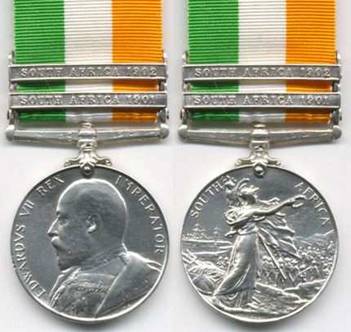
Figure 11. King’s South Africa Medal, Obverse
and Reverse.[24]
(Photograph
from the author’s collection)
Order of the British Empire (Military Division)[25] |
Egypt 1882 Medal with clasp [SUAKIN 1885] |
Queen’s South Africa Medal with clasps [CAPE COLONY][ORANGE FREE STATE] [TRANSVAAL] |
King’s South Africa Medal with clasps [SOUTH AFRICA 1901][SOUTH
AFRICA 1902] |
Khedive’s Bronze Star 1884-86 |
The King’s South Africa Medal with two clasps is in the author’s collection. The remaining medals earned by Molony are shown below. The whereabouts of these medals is unknown.
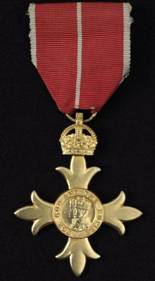
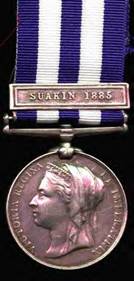
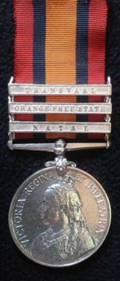
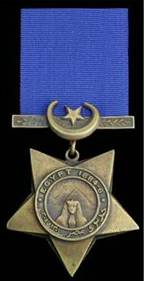
Figures 12. From left to right: Order of the
British Empire, Egypt 1882 Medal, Queen’s South Africa Medal and
Khedive’s Star.
(Images courtesy of Wikipedia)
8. RELEASE FROM SERVICE
Major Molony was released from active service in the Army on the 17th of May 1913 and was then appointed to the Reserve of Officers in 1914.[26] His total service was reckoned as shown in the tables below. He may have performed some reserve service during the Great War of 1914-1918. If his service papers can be obtained, this reserve service may well be defined.
Location |
Period of Service |
School of Military Engineering, |
1882 to 1885 |
Suakin, The Sudan |
1885 to 1887 |
Plymouth, |
1887 to 1890 |
Halifax, |
1890 to 1893 |
Woolwich, |
1893 to 1899 |
South Africa |
1899 to 1903 |
Berehaven, |
1903 to 1908 |
Stobs, |
1908 to 1910 |
Perth, |
1910 to 1913 |
Location |
Period of Service(1) |
Home Service |
20 years |
Service Abroad |
7 years and 6 months |
Total Service (Active) |
27 years and 6 months |
Total Service (Reserve) |
5 Years(2) |
TABLE NOTES:
Without access to his service records, Molony’s periods of service at each posting have been estimated; therefore, his total service also is an approximation.
Molony was promoted to Lieutenant Colonel in 1916 and was awarded the Order of the British Empire in 1919. Presumably the promotion and the award were for reserve service during the Great War. No medal index card could be found for him to indicate that he received any other medals for service in the war.
9. POST SERVICE LIFE
When he left the Army Francis Arthur Molony took up residence at 8 Selwyn Gardens in Cambridge. Molony’s house at 8 Selwyn Gardens was located less than one tenth of a mile to the north northeast of Wolfson College of the University of Cambridge and about six tenths of a mile to the southwest of the main University of Cambridge campus. His home was surrounded by facilities of the university, including sports grounds of the various colleges.
The Medal Index Card of his son, Edward Frederick, indicates that Edward received hi Great War Medals at the Selwyn Gardens address in January 1922; hence, it may be assumed that he was living with his father at that address at that time.
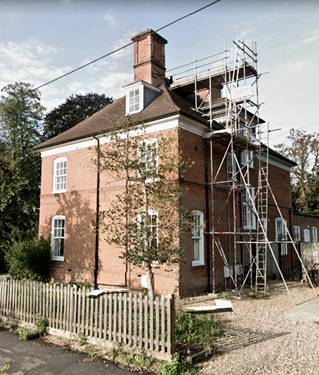
Figure 13. 8 Selwyn Gardens in Cambridge (undergoing
renovations in 2020).
(Photograph courtesy of Google Earth)
Religion and Philosophy
From 1922 to 1924 Molony served as the Secretary of The Victoria Institute. The Victoria Institute, or Philosophical Society of Great Britain, was founded in 1865, as a response to the publication of On the Origin of Species and Essays and Reviews. Its stated objective was to defend "the great truths revealed in Holy Scripture ... against the opposition of Science falsely so called." Although it was not officially opposed to evolution, it attracted a number of scientists skeptical of Darwinism, including John William Dawson and Arnold Guyot.
The Royal Engineers Retired List shows Molony still residing at the 8 Selwyn Gardens address between 1930 and 1935 and it appears that he continued to live at this address until 1939.[27] During this period he made a number of presentations at The Victoria Institute in Westminster, the titles of which are presented below.[28]
2 May 1932: “The Magi: Their Nationality and Object.” This presentation dealt with the predicting of the coming of Christ, a discussion of the nationality of the three “Wise Men” and whether they were Jews or Gentiles and the meaning of the Magi’s gifts. The paper also contained a rather lengthy discussion on the star of Bethlehem and the possibility that it was an astronomical phenomenon caused by the conjunction of Jupiter and Saturn, a phenomenon that causes an extraordinarily brilliant and peculiarly evanescent glow in the sky every 800 years. Molony’s presentation showed that he had an extraordinary knowledge of the Bible and was well versed in astronomy.
20 January 1936: The Noachian Deluge and Its Probable Connection with Lake Van. This presentation discussed the formation of Lake Van in Turkey and the Great Flood described in the Bible. Molony discusses geology and the probable date and duration of the flood. The knowledge of geology that he exhibits in this work is undoubtedly the result of his studies in the field while serving in The Corps of Royal Engineers.
1943: Some Events of the Forty Days Following Christ’s Resurrection, with Special Reference to the Great Meeting in Galilee. This paper dealt with the appearance of Jesus Christ alive after his crucifixion to 500 brethren in Galilee.[29] It was a purely religious paper which exhibited Molony’s in-depth knowledge of the Bible.
In addition to papers written for The Victoria Institute, Molony also wrote articles for The Churchman, an evangelical Anglican academic journal published by the Church Society.
January 1938: An Important and Remarkable Discovery. This paper discussed The Ten Lost Tribes and the possible settlement of the Chiang Min in China and their belief in a divine agent from heaven called the great Sin-Bearer whose name was Je-Dsu and to whom they made sacrifices of lambs, making an obvious connection with Jesus, the Lamb of God.
October 1938: Isaac Whiteheart – A Recent Martyr. In this article Molony discussed a Chinese convert to Christianity who, in 1935 was killed by the Chinese Communist for his faith when he refused to leave his family and his village, knowing that the communists would seek retribution for his departure.
Both of the above articles relied heavily on discussions that Molony had with religious historians and researchers. The article show that he reached out to many such individuals for their knowledge relating to the history of Christianity.
Molony the Artist
Francis Arthur Molony was an accomplished watercolour painter. He produced many paintings that are still on the market today. In January of 2021 copies of his paintings were being sold by Sulis Fine Art in Corsham, Wiltshire. His original works are held at The National Army Museum in London. His paintings depict locations in the United Kingdom, Europe, South Africa, India and Canada. It is not known whether these paintings were done by him on location, from memory, or copied from post cards or other printed sources. If he actually was at the locations named on the paintings, then he may have spent some leave time at the various locations or he may have been posted to locations that may be discovered if his service papers can be found.
The following are some his paintings recently listed by Sulis Fine Art:
Hardangerfjord,
Norway, early 20th century.
Schaffhausen,
Switzerland, early 20th century.
The
Priory Blythburgh Suffolk, late 19th
century.
St John's College Cambridge Wren Bridge, date
unknown.
The Dewestone, Dartmouth. Devon, 1898.
[Unidentified]
Landscape, early 20th century.
Fellows’
Garden Emmanuel College Cambridge, date unknown.
Ship at Sea,
early 20th century.
Watercolour, In St.
James Park, early 20th century.
Lancaster
Castle, date unknown.
Crummock Water, Lake District, 1935.
Hout
Bay, South Africa, early 20th century
(see Annex B).
Hout Bay (Afrikaans: Houtbaai, meaning "Wood Bay") is a seaside suburb of Cape Town in the Western Cape province of South Africa. It is situated in a valley on the Atlantic seaboard of the Cape Peninsula, twenty kilometer south of Cape Town. Molony probably painted this scene when he was in the Cape Colony sometime during 1902 or 1903.
This is an unusual painting. Although many of his fellow officers had served in India, no evidence was uncovered during this research work to indicate that Molony had ever served there. It is possible that during his travels to the Sudan or to South Africa he may have stopped in India. It also is possible that the painting was created by him from stories of India told by fellow Sappers, or purely from his imagination.
This painting surely was based on Molony’s imagination.
This painting probably was painted by Molony when he was stationed in Perth as the District Officer and Acting Commander Royal Engineers from 1910 to 1913.
Richmond is a coastal city located in of British Columbia, Canada. Molony was stationed in Halifax, Nova Scotia from 1890 to 1893. He may have visited the west coast of Canada during that period. This painting may have been done then (late 19th century) or it may have been painted in the early 20th century from a drawing that he made some years before.
Final Years
In 1939 Molony was living with his wife at 3 Shaftesbury Road in Cambridge. The 1939 Register of England shows the following people living at this address:
· Francis A. Molony, Lt. Colonel, Retired, A.R.P. Warden.
· Katherine M. Molony, Invalid.
· Margery E. Molony, housekeeper, A.R.P. Warden.
· Fanny Marshall, teacher, retired.
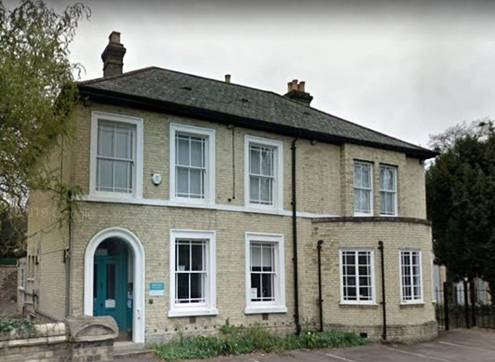
Figure 14. 3 Shaftesbury Road, Cambridge.
(Image
courtesy of Google Earth)
Molony’s wife Katherine was suffering from a debilitating disease and his daughter Margery, a 44-year old spinster was living with them and probably caring for her mother as well as being a housekeeper. Fanny Marshall was 67 years old and her relationship to the Molony family is not known. She may have been a boarder in their home, a family friend or a relative.
Both Lieutenant Colonel Molony and his daughter served as Air Raid Precaution (A.R.P.) Wardens during the war. Before the Second World War, British people feared that any future war would involve heavy aerial bombing of civilian areas. In December of 1937, the British government passed the Air Raid Precautions (or A.R.P.) Act, requiring local authorities to ready themselves in case of air attack.
One of the most visible forms of A.R.P. was the air raid warden. These wardens became the first link in a chain of A.R.P. bodies that would include firefighters, rescue and first aid parties, ambulance crews and medics.
The wardens had a range of duties, such as advising local people on air raid precautions and enforcing the night time ‘blackout’ to ensure no artificial lights were visible from the air. During a raid, wardens were responsible for monitoring and reporting bomb damage, and for helping to coordinate the response of other civil defence services.[30]
At 76 years of age Molony probably did not travel too far or too quickly when performing his A.R.P. duties and may have looked very much like the gentleman below.
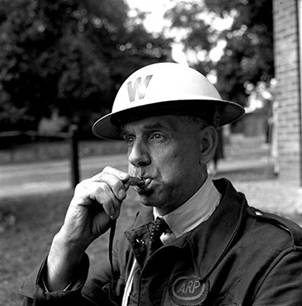
Figure 15. An Elderly Air Raid Precaution Warden
During WW2.
(Photograph courtesy of the World War II
Christian web site)
Francis Arthur Molony lived through most of the World War 2 years and died on the 22nd of July 1944 at the age of 81 in the Evelyn Nursing Home at 4 Trumpington Road in Cambridge.
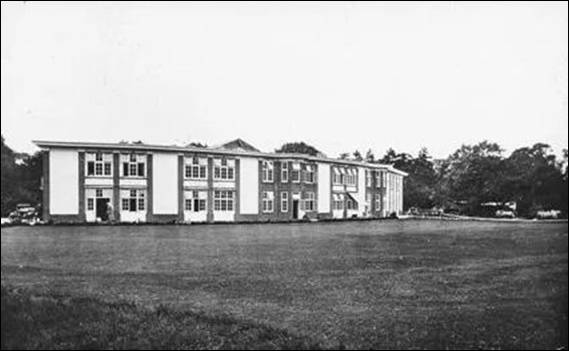
Figure 16. The Evelyn Nursing Home, 4 Trumpington
Road, Cambridge.
(Photograph courtesy of Wikipedia)
Molony’s will was filed for probate with his effects passing to his daughter, Dorothy Katherine Molony, a 49-year old spinster. His effects amounted to £6113-15s-4d, or about $376,800 US in 2021 currency.[31] One may assume that his other daughter, Margery, may have been left with the house at 3 Shaftesbury Road.
10. MARRIAGE, FAMILY AND PERSONAL INFORMATION
a. Spouse
Francis Arthur Molony married Katharine Mary Grigg at Saint Martin in the Fields, Westminster, London on the 8th of November 1888. Their marriage certificate indicates that Francis was a 25-year old Lieutenant in the Royal Engineers and Katharine was a 26-year old spinster. The couple was residing at the Grand Hotel in London at the time of their marriage. Katharine’s father is shown on the certificate as John William Grigg, a barrister. Witnesses to the marriage were Katharine’s father and her sister, Marion Grigg.[32] The presiding vicar of the marriage was assisted by Reverend Herbert J. Molony of St. Stephen’s Parish, Newcastle-on-Tyne, Francis’ brother.
Katharine accompanied her husband on all his postings except the Sudan and South Africa. Like a good Army wife she was with him in Halifax, Nova Scotia and at Woolwich, at Croydon and Addiscombe in Surrey, at Berehaven in County Cork, Ireland, at Stobs and Perth in Scotland and finally in Cambridge.
Katharine was listed as an invalid in the 1939 register, so apparently she suffered from a serious illness at that time. She passed away in Cambridge on the 27th of April 1941.[33]
b. Parents
Father (1833-1868)
Francis Arthur Molony’s father, Frederick Beresford Molony, was born in Kiltanon, County Clare, Ireland on the 15th of June 1833, one of seven children of James Molony (1785-1874) and Lucy Emily Molony (1796-1855), née Wheler. Frederick was baptized on the 4th of July 1833 at St. Mary’s Church in Bryanston Square, London.
Frederick married Eleanor Jane Gayer (1837-1928) at St. Peter’s Church in Dublin on the 13th of October 1857. He became a Civil Servant with the Honorable East India Company and spent most of his career in Madras, India. He died in India on the 13th of November 1868 at the age of 38.[34]
Mother (1838-1928)
Francis’s mother, Eleanor Jane Gayer, was born in Dublin in 1837, one of six children of Conway Arthur Edward Gayer (1801-1877) and Eleanor Harriet Gayer (1808-1844), née Whitty. Eleanor died in Eastbourne, Sussex on the 14th of February 1928.[35]
c. Siblings
Mary Selena Molony (1860-1943)
Mary was born in Cuddapah, Madras on the 22nd of July 1860. Mary was living with her mother in 1871. In 1881 she was living with her aunt, Helen Molony, in Shanklin, Hampshire and by 1901 she was living on her own means in Westminster, London. In 1939 she was living in Sussex as a retired missionary. She remained unmarried her entire life. Mary died on the 27th of January 1943 in the Glen Lyn Nursing Home in Molesey, Surrey at the age of 82.[36] Her home address at the time of her death was 6 St. Matthews Gardens, St. Leonards-on-Sea. In her will she left £1722-11s-7d (about $112,900 US in 2021 currency) to her brother, Francis Arthur Molony.
Herbert James Molony (1865-1939)
Herbert was born in Dublin, Ireland on the 2nd of June 1865. He attended Leamington School and Pembroke College, Cambridge University, matriculating in 1884 and graduating with a Bachelor of Arts Degree in 1887, a Master of Arts degree in 1908 and a Doctor of Divinity Degree in 1908.[37] Herbert was ordained a deacon and was a Curate at Newcastle-on-Tyne in 1888 and a priest in 1889 of St. Stephen’s, Newcastle-on-Tyne. He was a missionary of the Anglican Church at Mandla, India from 1890 to 1904 and Secretary and Examining Chaplain to the diocese of Nagpur from 1904 to 1907. He was a missionary at Jubbulpore, India from 1905-1907 and Bishop in Chikian (mid-China) from 1908 to 1928. Herbert was the Rector of Teston, Kent from 1929 to 1937.
Herbert married Eveline Houston Collison (1861-1897) in Calcutta, Bengal, India on the 17th of September 1895. Eveline died on the 12th of September 1897 in Mandla, India. He married a second time to Gertrude Elizabeth Stubbs (1868-1959) at St. James’s Parish Church in Clerkenwell, London.
Herbert died on the 22nd of July 1939 at St. Leonards-on-Sea and was buried at Teston. His effects, amounting to £1491-8s (about $173,500 US in 2021 currency), were left to his widow.[38]
NOTE: A photograph of Herbert James Molony by an unknown photographer, vintage bromide print, circa 1910s, 4 1/4 in. x 2 3/4 in. (109 mm x 69 mm) image size, given by Corporation of Church House, 1949, Photographs Collection, is on file at the National Portrait Gallery (NPG x159307), but it has not been digitized.
Eleanor Florence Molony (1867-1953)
Eleanor was born in Ramsgate, Kent on the 21st of January 1867. She was baptized at St. George’s Church in Ramsgate on the 25th of March 1868. She married Horatio Scott (1834-1895) at Crookham, Christ Church, Surrey on the 5th of July 1892. Her husband Horatio died in Hartley Wintney, Hampshire on the 2nd of June 1895. Eleanor married a second time under the name Eleanor Scott, widow. She married Francis Mackenzie Ogilvy in Paddington, London in July of 1906.[39]
She lived in Byfleet, Surrey until at least 1939 and subsequently moved to Kensington, London where she resided at 32 Belsize Park in Hampstead, London and later at 4 Fawcett Court, Fawcett Street. Francis Ogilvy had died on the 23rd of March 1933 in Hampstead. His will was filed for probate in London on the 4th of May 1933 with his effects going to his wife Eleanor Florence Ogilvy and John Beresford Heaton and Andrew Jameson Matthews Duncan solicitors. Francis’ effects amounted to £22926-15s-10 (approximately $2,913,000 US in 2021 currency).[40]
Eleanor died in Kensington on the 17th of March 1953 at 92 Redcliffe Gardens, Kensington. Her residence address at the time of her death was the Fawcett Court address. In her will she left here effects to Patrick Millington Synge (1910-1982), editor and author, and to Hugh Christopher Whitehead, solicitor. Her effects only amounted to £2665-6s (about $100,000 US in 2021 currency).[41] Apparently a large portion of the almost £22,926 left to her by her husband Francis and to the two solicitors went to pay off debts owed by Mr. Ogilvy.
Agnes Freda Helen Molony (1868-1924)
Agnes was born in Clifton, Gloucestershire in 1868. She was baptized in the Parish of Christ Church in Bristol on the 25th of November 1868. She married Edward Millington Synge (1860-1913), the father of Patrick Millington Synge, in Byfleet, Surrey on the 1st of February 1908. Edward Millington Synge died in Surrey on the 18th of June 1913.[42]
Agnes died in Chertsey, Surrey on the 19th of September 1924 and was buried in Byfleet on the 22nd of September. At the time of her death her address was Clare Cottage, West Byfleet. Her will was filed for probate in London on the 2nd of December 1924 with her effects bequeathed to the Right Honourable Sir Robert Arthur Sanders, Baronet and to Eleanor Florence Ogilvy (wife of Francis Mackenzie Ogilvy). Her effects amounted to £7177-6s-8d (approximately $580,200 US in 2021 currency).[43]
Children
Dorothy Katherine Molony (1890-1981)
Dorothy was born in Halifax, Nova Scotia on the 22nd of December 1981. Dorothy remained a spinster all of her life and resided in Cambridge for many years. She died on the 23rd of September 1981 at the age of 90. At the time of her death she resided at 4 St. Winefrides Road in Littlehampton, West Sussex.[44] Her estate was valued at £85,971 (about $456,500 US in 2021 currency).[45]
Arthur William Molony (1892-1973)
Arthur was born in Halifax, Nova Scotia on the 4th of October 1892. Arthur was appointed a Temporary 2nd Lieutenant in the King’s Royal Rifle Corps (KRRC) on the 30th of October 1940.[46] He was posted to the 7th (Service) Battalion of the King’s Royal Rifle Corps for service in France on the 6th of August 1915.[47]
The 7th (Service) Battalion, KRRC was formed at Winchester on the 19th of August 1914 and was assigned to the 41st Brigade of the 14th (Light) Division. After its formation the battalion moved to Aldershot, Hampshire going on to Grayshott, Hampshire in November and in February of 1915 it went to Bordon. The battalion returned to Aldershot in March of 1915 and landed at Boulogne, France on the 19th of May 1915.[48]
2nd Lieutenant Molony did not remain with the 7th Battalion for very long. On the 1st of September 1916 he was transferred to the Training Reserve and appointed a Temporary Lieutenant.[49] The following, from The Long, Long Trail internet web site, describes the Training Reserve in detail.
“A considerable reorganization of the reserve infantry battalions took place on the 1st of September 1916. Before this date, most of the infantry regiments contained one or more reserve battalions of the regular and new armies. Recruits would be posted to these battalions for basic training, before they were posted to an active service unit. With the introduction of conscription, the regimental system simply could not cope with numbers. A new structure was put into place: the Training Reserve (TR). The local nature of recruitment for infantry regiments was abandoned and the entire system centralized.
After the 1st of September 1916, regimental distinctions disappeared and the reserve units of the regiments were instead redesignated as battalions of the Training Reserve. They were organised into new brigades. No Guards, Irish or Territorial battalions converted to the TR. The reorganization did not affect the Special Reserve or Extra Reserve battalions of the regular army (normally the 3rd and sometimes 4th Battalions of a regiment).”
The battalions of the King’s Royal Rifle Corps that were placed in the Training Reserve are shown in the table below. Although the 7th (Service) Battalion was not made part of the TR, it appears that Lieutenant Molony was posted to it as an individual and perhaps one of the cadres for the training of new soldiers.
Reserve Brigade |
TR Battalion |
Origin (was, up to end of August 1916) |
Location |
4th |
|
14th Bn, King’s Royal Rifle Corps |
Seaford |
4th |
18th |
15th (Reserve) Bn, the King’s Royal Rifle Corps |
Seaford |
21st |
|
24th Bn, the King’s Royal Rifle Corps |
Blyth |
26th |
109th |
19th (Reserve) Bn, the King’s Royal Rifle Corps |
Wimbledon |
26th |
110th |
22nd (Reserve) Bn, the King’s Royal Rifle Corps |
Wimbledon |
26th |
111th |
23rd (Reserve) Bn, the King’s Royal Rifle Corps |
Wimbledon |
Molony was promoted Lieutenant in the Training Reserve on the 1st of July 1917.[50] He resigned his commission on the 26th of July 1918, his resignation taking place, curiously, just three and a half month prior to the end of the war. For his service he was awarded the 1914-15 Star, British War Medal and Victory Medal.
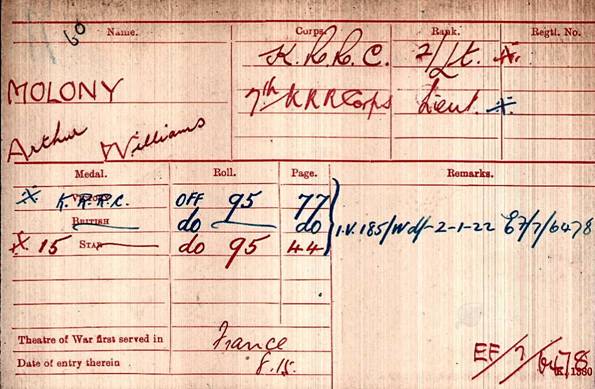
Figure 17. The Great War Medal Index Card of
Lieutenant Arthur William Molony, King’s Royal Rifle Corps (front
side)
(Image courtesy of Ancestry.com)
Although it is not shown on his Medal Index Card, his date of arrival in France was the 6th of August 1915. This date can be found on the medal roll awarding him the 1914-15 Star.
In 1920 Arthur was living in Cambridgeshire. Apparently he became a clergyman after leaving the Army. He married Monica Gwynne Davies (1895-1962) in St. Paul’s Church, Ningpo, China on the 27th of November 1924. Arthur was a missionary in China at the time. They had a daughter, Muriel Dorothy, who was born on the 11th of November 1926 and who died on the 18th of November. The infant was buried in the Passen-Jao Cemetery. Another daughter, Elizabeth, was born on 5 August 1929. Elizabeth married Arthur Burnett in 1952 and they had four children who were all married with two children each. These oldest of these now also have 2 children each.
The couple returned to England on the 11th of August 1928 and took up residence in Kent. In 1946 they were living in London and by 1960 they were living in Folkestone, Kent. Monica died at The Old Bakehouse, Urchfont, Devises, Wiltshire on the 22nd of March 1962 at the age of 67. The Reverend Arthur William Molony died in Saffron Waldon, Essex on the 27th of December 1973, aged 81.[51]
Margery Eileen Molony (1895-1981)
Margery was born in Woolwich, Kent on the 7th of January 1895. She was baptized on the 9th of February 1895 in St. James Parish, Plumstead, Kent. Margery remained unmarried her entire life and appears to have lived most of it in Cambridge. She died on the 27th of May 1981 in St. George’s Nursing Home, Kneesworth, St. Royston, Hertfordshire.[52] Her will was filed for probate in Ipswich, Suffolk on the 4th of September 1981, with her effects valued at £46,348 (approximately $246,100 US in 2021 currency).[53]
Edward Frederick Molony (1899-1929)
Edward was born in Croydon, Surrey on the 16th of March 1899 and was baptized in the Parish of Addiscombe, Surrey on the 27th of April 1899. He entered Repton School in May of 1913 and left in April of 1917 to enter the Royal Military Academy, Woolwich.
Cadet Edward Frederick Molony was commissioned a Temporary 2nd Lieutenant from the Royal Military Academy on the 12th of January 1918.[54] He was sent to France on the 24th of April 1918 in time to take part in the closing months of the Great War. For his service he was awarded the British War Medal and Victory Medal.
Edward relinquished his commission and retained the rank of 2nd Lieutenant on the 13th of February 1919.[55] After leaving the Army he lived with his parents at 8 Selwyn Gardens in Cambridge until his death on the 20th of February 1929 at the age of 30. He left £1,453-17s (about $78,900 US in 2021 currency) to his father.[56]
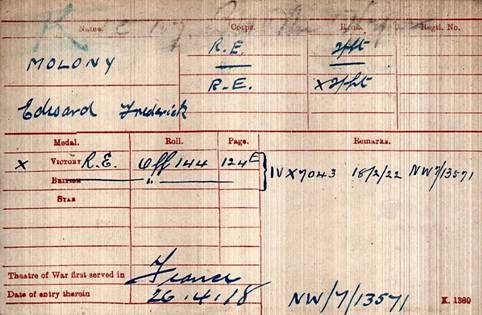
Figure 18. The Great War Medal Index Card of 2nd
Lieutenant Edward Frederick Molony, Royal Engineers (front)
(Image
courtesy of Ancestry.com)
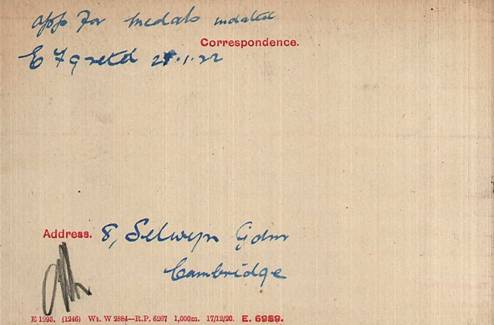
Figure 19. The Great War Medal Index Card of 2nd
Lieutenant Edward Frederick Molony, Royal Engineers (back)
(Image
courtesy of Ancestry.com)
After his relatively short military service, towards the end of WWI Edward Frederick gained a 2:1 in Natural Science at Emmanuel College Cambridge and then attended the Medical School at St Bartholomew's (Barts) Hospital in London. He then served in Persia as a Medical Missionary for the Church Missionary Society (C.M.S.) based at Kerman in Persia (Iran). Sadly he died there on 20 February 1929. The informant was his First Cousin Once Removed, Dr Lucy Selina Molony, who was at that time serving as a Medical Missionary at Yezd in Persia (Iraq) but later she also served in Kenya in Africa. The Molonys seem to have had a large amount of Missionary/Colonial service in the family.
NOTE: This
information was provided by Mr. Martin Keys, along with a copy of
Edward Frederick Molony's death certificate from the British
Consulate at Kerman.
Establishment for Engineer Services
The term Establishment for Engineer Services (E.E.S.) or Royal Engineer Works Service had been used for a number of years in the 20th century to describe the duties of the Royal Engineers in connection with building construction and the use of materials. This establishment dealt with the construction of fortifications, but by and large its greatest responsibility was in the area of the construction and maintenance of barracks. Other works undertaken by the Establishment included hospitals and Army Ordnance buildings. With regard to the latter, the work included not only the buildings themselves, but also the provision and maintenance of fixed machinery and the construction and maintenance of magazines and buildings for the storage of explosives, with special attention to precautions against fire and protection against lightning.
The E.E.S. was also involved with other buildings in support of the Army Service Corps, to include bakeries, stores, transport sheds and workshops. Special facilities such as refrigeration plants were also provided at Gibraltar and Malta and at other tropical locations. Many other buildings, such as churches, schools, offices, quarters for Commanding Officers and certain Staff Officers, were also provided by the E.E.S. Other essential services of the Establishment included the charge of military cemeteries and burial grounds, the preparation of graves and the appointment and supervision of caretakers.
In connection with all of the above works, there was an organization within the E.E.S. responsible for the control of "Military Lands." This term included the land on which the barracks and fortifications were constructed, along with roads, parades and recreation grounds. Closely allied to the control of "Military Lands" was the provision of rifle and artillery ranges.
One of the special branches within the E.E.S. included the Electrical Branch which consisted of Defence Electric Lights, Telegraphs, Telephones, and Miscellaneous Electrical Services. The largest sub-element of the Electrical Branch was the Submarine Mining Service, which was responsible for the mine defences and also for the defence electric lights and electrical communications in the defended ports throughout the British Empire. Other miscellaneous electrical services included barracks lighting and protection of building against lightning.
A second special branch of the E.E.S. was the Mechanical Branch, with its responsibility for installation and maintenance of engines, boilers and machinery used with pumping and heating plant, and machinery used in Royal Engineer and Ordnance workshops. Other special branches of the Establishment were the Mechanical Transport Branch and the Railway Branch.
Some Watercolour Paintings by Francis
Arthur Molony.
![]()
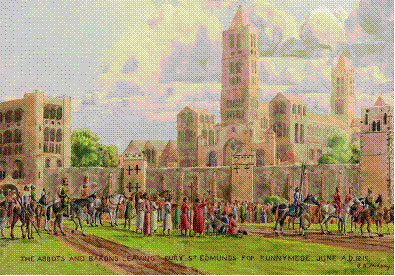
Figure 20. Magna Carta: Myth and Meaning
THE
ABBOTS AND BARONS LEAVING BURY ST
EDMUNDS FOR RUNNYMEDE JUNE
A.D. 1215
F.A.
Molony
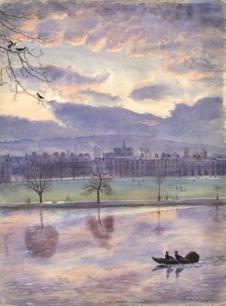
Figure 21. The River Tay, Perth.
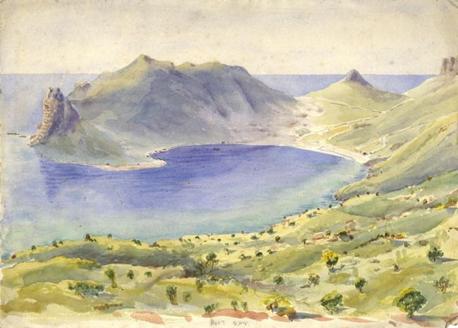
Figure 22. Hout Bay, South Africa.
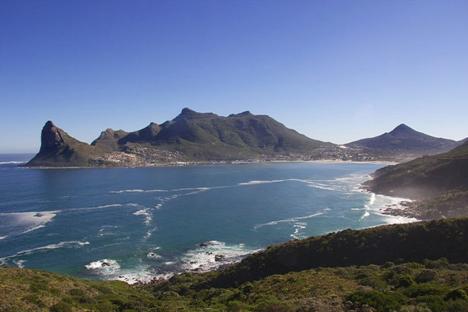
Figure 23. Hout Bay, South Africa as It Appears Today.

Figure 24. Canadian Rockies, Richmond.
REFERENCES:
Army Lists
Monthly Army List, April 1890, p. 244.
Monthly Army List, June 1890, p. 244.
Monthly Army List, March 1898, pp. 41 and 448.
Monthly Army List, June 1903, pp. 76 and 448.
Books
1. BAKER BROWN, W. The History of the Corps of Royal Engineers. Volume IV. The Institution of Royal Engineers, Chatham, Kent, 1952, pp. 245-262.
CONOLLY, T.W.J. Roll of Officers of the Corps of Royal Engineers from 1660 to 1898. The Royal Engineers Institute, Chatham, Kent, 1898, p. 58.
CRESWICKE, L. South Africa and the Transvaal War. Volume II. T.C. & E.C. Jack, Edinburgh, 1900.
MATHIESON, S. Doctor of Philosophy Thesis. The Victoria Institute, 1865-1932. A Case Study in the Relationship between Science and Religion. Queen’s University, Belfast, 2018.
MOLONY, F.A. PIETER’S HILL: A Tactical Study. Paper XI. Professional Papers of the Royal Engineers, Volume XXX, 1904. The Institution of Royal Engineers, Chatham, Kent, 1905, pp. 251-273.
PORTER, W. The History of the Corps of Royal Engineers, Volume II. The Institution of Royal Engineers, Chatham, Kent, 1951, p. 537.
Repton School Register, 1922. Edson (Printers) Limited, London, 1922, p. 311.
SANDES, E.W.C. The Royal Engineers in Egypt and the Sudan. The Institution of Royal Engineers, Chatham, Kent, 1937, pp. 71 and 76.
South African Honours & Awards, 1899-1902. Hayward and Hall, London, 1971, p. 112.
“Who was Who” 1897–1990, London, A & C Black.
"The Clergy List, Clerical Guide and Ecclesiastical Directory" London, Hamilton & Co. 1889.
Census
Census of England, RG 10/928.
Census of England, RG 11/748.
Documents
Crisp’s Marriage Index, 7 November 1888.
Marriage Certificate, 8 November 1888.
Baptism Certificate: Edward Frederick Molony, 27 April 1899.
Chart of Staff Appointments Made at the Commencement of the War. The War Office, 7 October 1899.
Medal Index Card: Edward Frederick Molony.
Probate Calendars, various years as noted in text and ENDNOTES.
"Molony, Herbert James". A Cambridge Alumni Database. University of Cambridge.
Papers on Inter-Racial Problems. Communicated to the first Universal Races Congress held at the University of London ... 1911. Edited, for the Congress executive, by G. Spiller.
Family Trees
Francis Arthur Molony (AJTO1)
https://www.ancestry.com/family-tree/person/tree/70543637/person/392104164070/facts
Francis Arthur Molony (Nigel Bushwell)
https://www.ancestry.com/family-tree/person/tree/161337691/person/172115852425/facts
Frederick Beresford Molony (Nigel Bushwell)
https://www.ancestry.com/family-tree/person/tree/161337691/person/172115852417/facts
Hart’s Army Lists
Hart’s Army List, 1887.
Hart’s Army List, 1890.
Hart’s Army List, 1894.
Hart’s Army List, 1898.
Hart’s Army List, 1915 (Retired List: War Service).
Internet Web Sites
13290 Company Sergeant Major, WALTER FREDERICK DONMALL, Royal Engineers
http://www.reubique.com/13290.htm
1919 Birthday Honours
Victoria Institute.
https://en.wikipedia.org/wiki/Victoria_Institute
Sulis Fine Art
BritishBattles.com. Battle of Pieters
https://www.britishbattles.com/great-boer-war/battle-of-pieters/
London Gazette
8 August 1882, p. 3690.
31 October 1890, p. 5746.
31 October 1899, p. 6533.
19 December 1899, p. 8466.
20 February 1900, p. 1172.
29 July 1902, pp. 4837 and 4841.
3 November 1914, p. 8887.
7 June 1916, p. 5707.
28 October 1916, p. 10495.
22 December 1916, p. 12486.
26 September 1917, p. 9959.
27 November 1917, p. 12341.
30 January 1918, p. 1494.
23 July 1918, p. 8716.
30 November 1920, p. 11897.
Medal Rolls
Egypt 1882 Medal Roll, 10th Company, Royal Engineers.
1914-15 Star, King’s Royal Rifle Corps, 2nd Lieutenant A.W. Molony.
British War Medal and Victory Medal, King’s Royal Rifle Corps, Lieutenant A.W. Molony.
British War Medal and Victory Medal, Royal Engineers, 2nd Lieutenant E.F. Molony.
Royal Engineers Medal Roll Book, Egypt 1882-1889 Medal and Khedive’s Star 1882-1889.
Royal Engineers Medal Roll Book, Vol. V, Queen’s South Africa and King’s South Africa Medals, 1899-1902.
Periodicals
Journal of The Transactions of The Victoria Institute or Philosophical Society of Great Britain, London, 1932
Journal of The Transactions of The Victoria Institute or Philosophical Society of Great Britain, London, 1936..
Journal of The Transactions of The Victoria Institute or Philosophical Society of Great Britain, London, 1943.
The Churchman, January 1938, pp. 40-43.
The Churchman, October 1938, pp. 228-229.
Royal Engineers List, January to December 1905.
Royal Engineers List, January to December 1908.
Royal Engineers List, January to December 1910.
Royal Engineers List, January to December 1912.
Royal Engineers List, 1930-1932.
Royal Engineers List, 1933-1935.
The Times Monday, July 24, 1939; page. 14; Issue 48365; column C. The Right Rev. Dr. H. J. Molony.
ENDNOTES:
[1] Family tree.
[2] Baptism certificate.
[3][3] It is difficult to determine if this house dates back to 1871 when the Molony family lived at this address. The multiple chimneys, hence the multiple fireplaces, would seem to indicate that it does date back to the late 19th century.
[4] The London Gazette, 8 August 1882.
[5] Later, Lieutenant General Sir James Bevan Edwards.
[6] Hart’s Annual Army List, 1887.
[7] Hart’s Annual Army List, 1890.
[8] Ibid.
[9] Hart’s Annual Army Lists, 1894 and 1898.
[10] The Monthly Army List, June 1903.
[11] The London Gazette, 31 October 1899.
[12] The London Gazette, 19 December 1899.
[13] Hart’s Annual Army List, 1915.
[14] Professional Papers of the Royal Engineers, Volume XXX, 1904.
[15] Lieutenant-General Sir Henry Hamilton Settle, KCB, DSO (27 January 1847 – 24 April 1923) was a senior British Army officer who held various commands during the Second Boer War.
[16] The London Gazette, 29 July 1902.
[17] Royal Engineers Medal Roll book.
[18] Ibid.
[19] Royal Engineers List, 1905.
[20] General Sir Charles Warren, GCMG, KCB, FRS (7 February 1840 – 21 January 1927) was an officer in the British Royal Engineers. He was one of the earliest European archaeologists of the Biblical Holy Land, and particularly of the Temple Mount. Much of his military service was spent in British South Africa. Previously he was police chief, the head of the London Metropolitan Police, from 1886 to 1888 during the Jack the Ripper murders. His command in combat during the Second Boer War was criticized, but he achieved considerable success during his long life in his military and civil posts.
[21] Royal Engineers List, 1908.
[22] Royal Engineers Lists, 1910 and 1912.
[23] Hart’s Annual Army List, 1915.
[24] This medal is in the author’s collection.
[25] New Years Honours, 1919.
[26] Hart’s Annual Army List, 1915.
[27] 1939 Register of England.
[28] The Philosophical Society of Great Britain Transactions.
[29] At this time Molony was living at 3 Shaftesbury Road in Cambridge.
[30] Imperial War Museum web site.
[31] Probate Calendar, 1944.
[32] The Grigg family tree shows a sister of Katherine’s named Charlotte Marion Grigg.
[33] Family tree.
[34] Ibid.
[35] Ibid.
[36] Probate Calendar, 1943.
[37] Pembroke Register.
[38] Probate Calendar, 1939.
[39] Family tree.
[40] Probate Calendar, 1933.
[41] Probate Calendar, 1953.
[42] Family tree.
[43] Probate calendar, 1924.
[44] Family tree.
[45] Probate calendar, 1981.
[46] The London Gazette, 3 November 1914.
[47] Medal Index Card.
[48] The Long, Long Trail.
[49] The London Gazette, 22 December 1916 and 28 October 1918. The London Gazette dated 21 September 1917 contained the following entry: “Temporary Lieutenant A.W. Molony from KRRC to Training Reserve to be Lieutenant, Training Reserve with seniority 1 July 1917.
[50] The London Gazette, 26 September 1916.
[51] Family tree.
[52] Ibid.
[53] Probate calendar, 1981.
[54] The London Gazette, 30 January 1918.
[55] The London Gazette, 30 November 1920.
[56] Probate calendar, 1929.